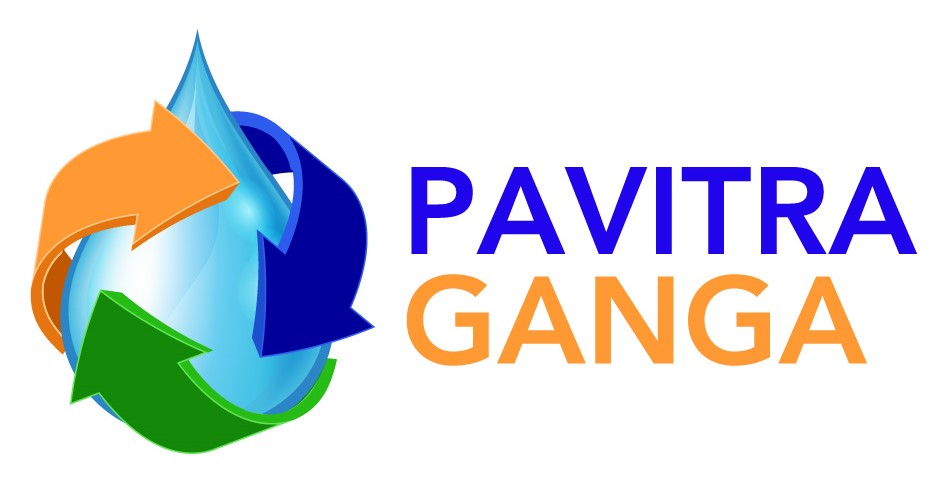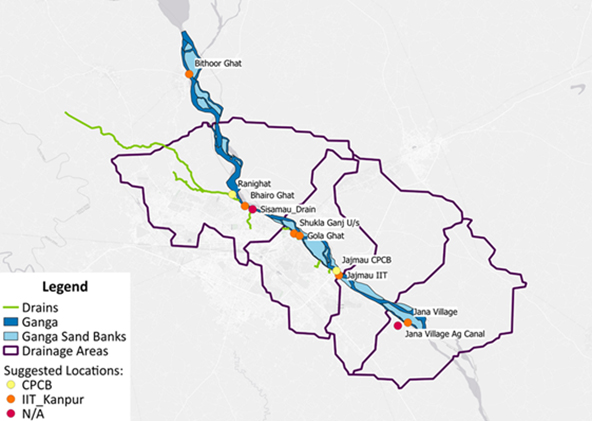We are pleased to give you a status update about the activities in the different work packages of Pavitra Ganga. The global pandemic continues to be a challenge and with new waves starting in Europe and India, the prospects for rapid progress in the project are not high. Nevertheless, we believe that there is enough new elements to share them with our followers and stakeholders.
Project Coordination (Work Package 1)
Since the last newsletter (September 2020) we have continued to have our monthly Project Management Team and Work Package meetings to keep the activities of the project aligned and plan our work.
In November 2020 the project participated in the First Interim Review of the EU-India Water Call projects, with the funding agencies (the European Union (H2020) and the Government of India (DST/DBT). During this 2 day online meeting all seven projects were given the opportunity to present the progress and planning of the projects to an external panel of experts.
Since then, even though the global pandemic has continued we have made some progress in the procurement of the technology pilots, the preparation of the piloting sites in Kanpur and New Delhi, and the planning of the water quality monitoring campaigns. Normally we should have had our 2nd General Assembly on 10th May but the newly raging second COVID-19 wave in India made this impossible to hold. Meanwhile in Europe the success of the vaccination campaign means that COVID-19 restrictions are eased so that laboratory work can take place. We plan to hold our 2nd General Assembly in September 2021.
In the progress report you can read a more comprehensive overview of the work in our work packages.
Paul Campling and Anshuman
Water Governance (Work Package 2)
With India recovering from the devastating COVID-19 wave in April / June there are now steps to restart the preparations of the co-creation workshops. We have had extensive talks with Solidaridad Regional Expertise Center (SREC), an NGO that is working in Kanpur with the tannery sector to introduce Best Available Techniques to reduce pollutants reaching the environment. They have agreed to facilitate the organisation of the co-creation workshops in the area to identify the critical issues and strategies for wastewater treatment. They are also prepared to help with the risk assessments of wastewater reuse schemes for irrigated agriculture as part of developing the wastewater safety planning (see WP4). We have also managed to have key bilateral discussions with stakeholders in New Delhi to discuss wastewater treatment and resource recovery issues in the Barapullah Drain area. Firstly, a meeting in February with Mr. Tyagi, recently retired from the Delhi Jal Board (Water Board), and secondly a meeting in May with Mr. Meena, Engineer-in-Chief, South Delhi Municipal Corporation – both meetings were interesting to receive inside information about the vision and strategies for both organisations for dealing with water and wastewater. We are making progress in the development of the first policy fact sheets which will focus on governance structures and critical issues for waste water management. In addition, we expect to make progress with the wastewater safety planning during the second half of 2021.
Anshuman and Tineke Hooijmans
Treatment and Recovery Technologies (Work Package 3)
The laboratory scale work has been deeply effected by the pandemic – as laboratory facilities were one of the first activities to be shut down, not only in terms of having access to waste water to work with but also in terms of allowing staff to work in enclosed conditions. So progress has been both slow and disjointed.
In Kanpur new reactors have been procured to assess anaerobic treatment and promising tests have been done with the filtration unit to concentrate waste.
In Europe wastewater treatment tests been carried out with “modelled” wastewater, which is not ideal but at least can be viewed as showing progress. Hopefully work with real wastewater can be re-started in the second half of 2021.
Steef de Valk and Sachin Shah
Water Monitoring and Modelling (Work Package 4)
Water quality and quantity monitoring and modelling is required to control and manage water resources effectively. In order to strengthen the modelling results for the Kanpur region, there is a need for additional data on top of the available data from official sources.
This data will be collected using Akvo’s mobile water quality monitoring. Ten locations are selected (see picture) and evaluated for accessibility of water sampling (picture from IIT K??). On a monthly basis the locations will be sampled and analysed for different water quality parameters (ammonia, phosphate, nitrate, nitrite, electrical conductivity, chromium, temperature, pH, DO, COD, total coliform and E.coli). The coming months the hardware and consumables for the tests will become available and training of the users is planned.
During the project we also want to establish citizen involvement and interest in water issues by engaging stakeholders to use low cost mobile monitoring tools. Discussions on the setup of this task and cooperation with local partners (Solidaridad Regional Expertise Center (SREC) is ongoing. Monitoring of the water quality of the reclaimed water used for irrigation in the villages in the Kanpur area will be planned in the coming months.
A monitoring network will be established for the Barapullah Drain catchment area in New Delhi. The purpose of the monitoring network is to evaluate the performance of technological solutions for improving water quality to receiving surface water bodies and improve operation and maintenance of facilities. The two locations where the stationary sensors will be installed are within the confines of the Barapullah Drain Piloting site, whereby a pump will be used to pump the drain water through a pipe that runs into the fenced compound and the IIT Delhi Campus. The sensors must be robust, meaning relatively cheap and reliable for continuous monitoring of basic water quality parameters. These will work in tandem with automated refrigerated grab samplers to improve the representativeness of the sampling, backed up by laboratory analysis. The procurement procedure is ongoing, and the installation and start-up of the monitoring network is planned for the next months.
Sofie Van Ermen and Zia Shaikh
Onsite Piloting and Performance Evaluation (Work Package 5)
The site preparation for receiving the pilot scale reactors has made stop and start progress during the last year. In Kanpur basic work was needed to secure a site within the compound of the Jajmau Wastewater Treatment plant – and this has been achieved with temporary buildings installed, electricity and water provision, plus foundations to house the pilots. The procurement and installation of the SFD-MBR at Kanpur is nearly completed – the pilot which was built in Europe was shipped to India and is now finally being fitted with additional accessories near Mumbai before being transported to Kanpur and installed. The other pilots in Kanpur are in the process of being procured. In New Delhi the site preparation has been a case of organising where the Pavitra Ganga pilots can be located within the current LOTUS HR set up at the Barapullah Drain. IIT Delhi has been allocated more space at the pilot location so this should not be a problem moving forward. Once all the pilots are procured and installed more progress can be made in on-site piloting and performance evaluation.
Christian Kazner and Zia Shaikh
Technology and Learning Network (Work Package 6)
The training workshops envisaged for Pavitra Ganga are all scheduled for the last year of the project. Work has been carried out to prepare the outline of each of these workshops. This has included setting out the key objectives and topics to be covered, proposing dates and duration, the venues for carrying out the workshops, and identifying the target groups and expected number of participants. One plus point from the pandemic is that online training has been the new modus operandi for many institutes – so this is also an option to pursue in the coming months.
Saroj Sharma and Purnendu Bose
Market Uptake and Business Development (Work Package 7)
The work has focused on the development of a roadmap to exploit the wastewater treatment, water re-use and resource recovery opportunities for a selected urban local body in Kanpur or New Delhi. The metropolitan area of Kanpur has been selected as the urban local body to develop a road map. For the moment this has been a pure desk-top study using the information from the stakeholder engagement workshops in India in 2020, bilateral discussions with stakeholders and other information collected during the project. We have used the “Water Utility Pathways in a Circular Economy” (2016) report of the International Water Association as the inspiration to outline circular economy opportunities in Kanpur as the basis of the roadmap. This approach will be fully discussed fully our stakeholders in the coming months before refining and finalising the report.
Herman De Schamphelaere and Sachin Shah

